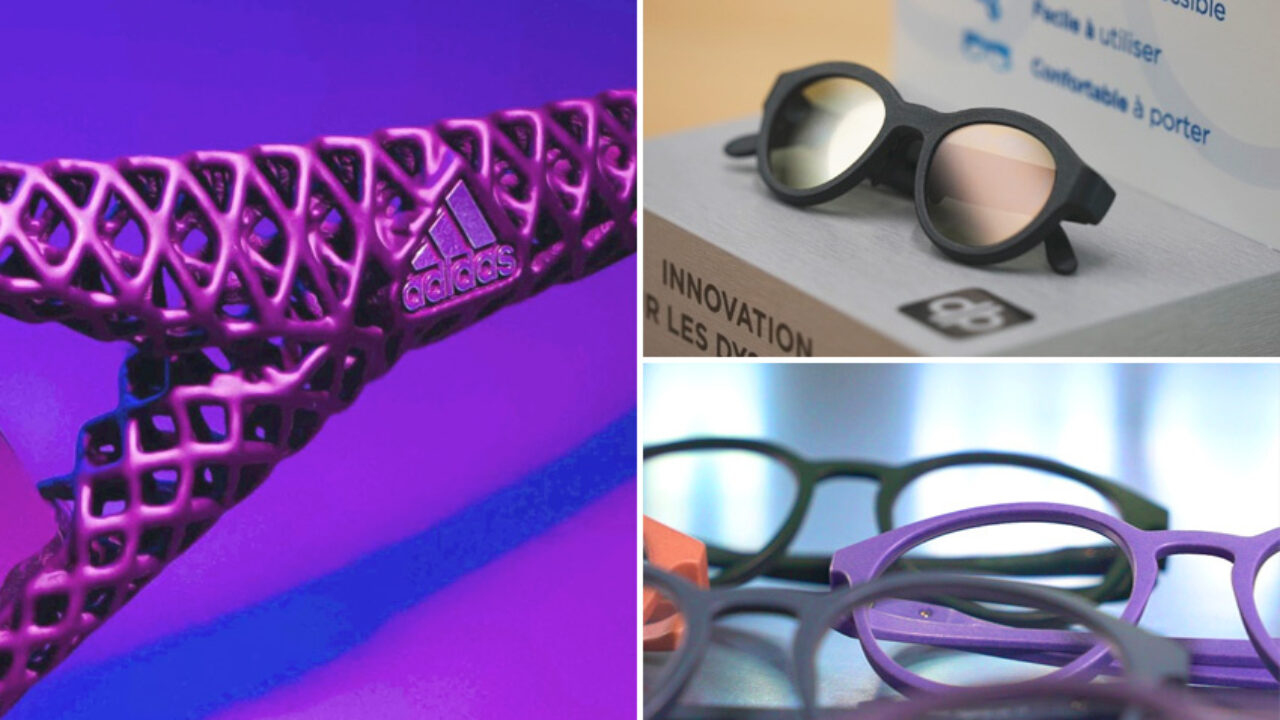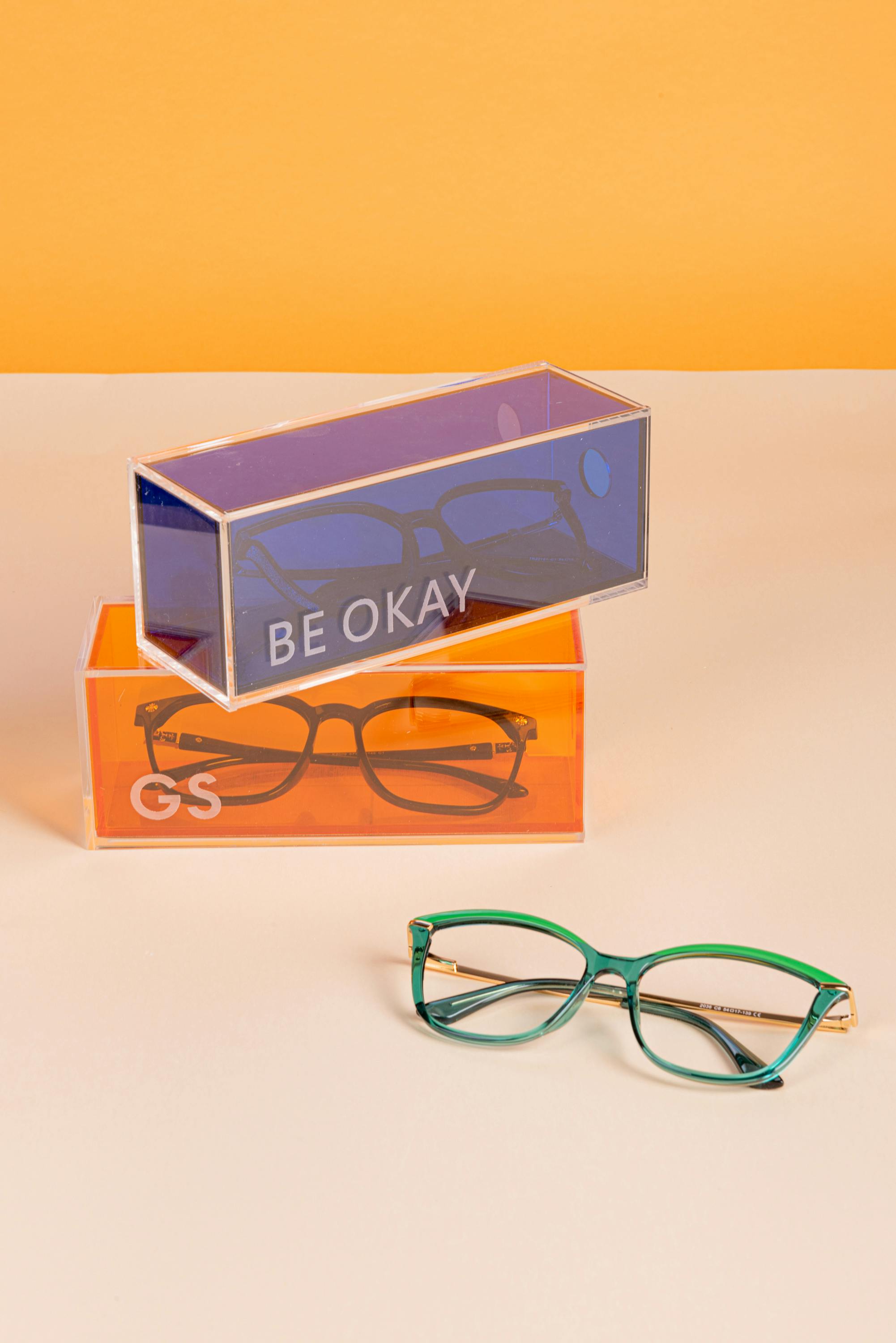Are you ready to experience the future of eyewear? The 3D printed eyewear market is booming, driven by demand for personalized design and efficient production. Discover the advantages of customized designer glasses and explore the vast selection available at Mozaer – your gateway to finding the perfect fit for your style and needs. Explore the innovative world of 3D-printed eyewear at https://www.mozaer.com/search?q=eyes+glasses+frames+designer and elevate your vision.
【3D Printed Eyewear: A New Vision for the Eyewear Industry】

The Rise of 3D Printing in Eyewear Manufacturing
Market size and growth projections for 3D printed eyewear (data from VoxelMatters study).
The eyewear market is experiencing a significant transformation driven by advancements in 3D printing technology. VoxelMatters studies project substantial growth in the 3D printed eyewear market. While precise figures vary depending on the study and its parameters, the consensus points towards a rapidly expanding sector. This growth is fueled by increasing consumer demand for personalized eyewear and the inherent efficiency of 3D printing for smaller-scale production runs and unique designs. This expansion is particularly evident in the niche markets of designer glasses and customized frames. The increasing affordability and accessibility of 3D printing technologies are also contributing factors. The market is predicted to experience double-digit growth in the coming years, attracting further investment and innovation.
Examples of eyewear brands utilizing 3D printing (e.g., Hoet, weareannu, TPI).
Several pioneering eyewear brands are already leveraging the benefits of 3D printing to create innovative and customized eyeglasses frames. Companies like Hoet are known for their high-quality, 3D-printed designer glasses frames. Weareannu also utilizes 3D printing to produce unique and stylish eyewear, emphasizing personalized design elements. TPI showcases the versatility of 3D printing by offering a range of options in materials and frame styles. These brands demonstrate the successful integration of 3D printing into eyewear manufacturing, showing its potential to disrupt traditional production methods. The adoption of 3D printing by these and other players indicates the growing acceptance of this technology within the designer glasses and eyewear frames market.
Advantages and Disadvantages of 3D Printed vs. Traditional Eyewear
Comparison of production costs, material usage, and environmental impact (data from Siemens study).
A Siemens study highlights the significant advantages of 3D printing in eyewear manufacturing concerning cost, material usage, and environmental impact. Compared to traditional mass production, 3D printing allows for on-demand production, reducing storage costs and minimizing waste from unsold inventory. The precise nature of 3D printing leads to less material usage, lowering production costs and contributing to a smaller environmental footprint. While the initial investment in 3D printing technology can be substantial, the long-term cost savings can outweigh the upfront expenses, especially for smaller businesses and those specializing in customized designer glasses frames and unique eyewear styles. This technology allows for efficient production of bespoke eyewear, responding directly to individual customer demands for unique frames.
Discussion on design flexibility and customization options offered by 3D printing.
3D printing offers unparalleled design flexibility and customization options for eyewear. Unlike traditional manufacturing methods limited by mold constraints, 3D printing allows for intricate designs and personalized features. Customers can create unique designer glasses frames tailored to their preferences. This ability to personalize eyewear extends beyond simple aesthetic choices; it also allows for the creation of frames with specific ergonomic features to enhance comfort and fit. This level of customization is a key driver of the growing popularity of 3D-printed eyewear, offering consumers a level of personalization previously unattainable. The ability to create virtually any shape and incorporate complex details allows for the creation of truly unique and stylish designer glasses frames and other eyewear. To explore the vast range of designer glasses frames and eyeglass options available through 3D printing, visit https://www.mozaer.com/search?q=eyes glasses frames designer”>eyes glasses frames designer and discover the perfect fit for your style and needs.
【Designer Eyewear: Luxury Meets Innovation】

High-End 3D Printed Eyewear Brands and Models
Case study: Konstantin Grčić’s “All Round” eyewear collection for JINS.
Konstantin Grčić’s “All Round” collection for JINS exemplifies the innovative intersection of high-end design and 3D printing in eyewear. Grčić, renowned for his minimalist aesthetic, utilized 3D printing to create lightweight and comfortable frames with intricate details impossible to achieve through traditional manufacturing methods. The collection showcases the potential of 3D printing to produce luxury designer glasses frames with a level of precision and customization previously unattainable. The success of this collaboration highlights the growing acceptance of 3D printed eyewear within the luxury market, proving that advanced technology doesn’t compromise on style or quality. The “All Round” collection demonstrates the power of designer glasses frames created through 3D printing technology.
Examples of high-end materials used in 3D printed designer eyewear (e.g., titanium).
The use of high-end materials further elevates 3D-printed designer glasses and eyewear frames to the luxury market. Titanium, known for its strength, lightness, and hypoallergenic properties, is a popular choice for high-end 3D printed frames. Other premium materials, such as high-grade acetate and specialized resins, are also employed to enhance the durability, comfort, and aesthetic appeal of the frames. The ability to incorporate these materials in the design process underscores the precision and control offered by 3D printing, allowing for the creation of lightweight yet robust designer glasses. These advanced materials offer superior comfort and durability, adding to the overall luxury experience of owning designer eyewear. Finding the perfect designer glasses frames made from high-quality materials is easier than ever before.
The Future of Designer Eyewear and 3D Printing
Exploration of potential collaborations between designers and 3D printing companies.
The future of designer eyewear is inextricably linked to the continued advancement of 3D printing technology and the collaborative efforts between established designers and innovative 3D printing companies. We can anticipate more collaborations like the JINS and Grčić example, bringing together established design houses with cutting-edge technology. This synergy will lead to the creation of even more unique and personalized eyewear, pushing the boundaries of design and customization. These collaborations will drive innovation in both design and manufacturing, creating new possibilities for designer eyeglass frames and glasses.
Discussion on the role of sustainability in high-end eyewear manufacturing.
Sustainability is becoming an increasingly important consideration in high-end eyewear manufacturing. 3D printing offers a more sustainable approach compared to traditional methods by reducing waste and allowing for on-demand production. The ability to produce only what is needed minimizes excess inventory and reduces the environmental impact. Using recycled and sustainable materials in 3D printing processes will further enhance the environmental friendliness of designer glasses frames and eyewear production. This commitment to sustainability is expected to play a larger role in shaping the future of luxury designer eyewear. To explore the latest in sustainable and stylish designer glasses frames and eyeglass options, browse the extensive selection at https://www.mozaer.com/search?q=eyes glasses frames designer”>eyes glasses frames designer and find the perfect pair that reflects your values and style.
【Lens Replacement Services: Keeping Your Frames Alive】

Best Practices for Eyeglass Lens Replacement
Importance of up-to-date prescriptions and frame condition (expert opinion from optometrist Ann Marie Griff, OD).
Regular eye exams are crucial for obtaining an up-to-date prescription for your eyeglasses. An outdated prescription can lead to eye strain, headaches, and even blurred vision. Before undergoing lens replacement, ensure your prescription is current. Furthermore, the condition of your existing frames plays a vital role. Damaged frames can compromise the fit and longevity of new lenses. Optometrist Ann Marie Griff, OD, emphasizes the importance of a thorough frame assessment before lens replacement. She advises, “A proper fitting and structurally sound frame are essential for optimal vision correction and comfortable wear. Neglecting this can lead to discomfort and even damage to the new lenses.” Inspect your frames carefully for any cracks, bends, or loose screws. Repairing or replacing damaged frames before lens replacement ensures the best possible outcome. Addressing frame issues upfront prevents future problems and ensures that your investment in new lenses is worthwhile.
Discussion on different lens types and their suitability for various prescriptions.
Choosing the right lenses is paramount for optimal vision. Several lens types cater to different needs and prescriptions. Single vision lenses correct for nearsightedness or farsightedness, while bifocal lenses provide distinct vision correction for both near and far distances. Progressive lenses (also known as no-line bifocals) offer a smooth transition between vision corrections for different distances. The best lens type depends on your specific prescription and lifestyle. Individuals with high prescriptions might benefit from high-index lenses, which are thinner and lighter than standard lenses. For those who spend extended periods outdoors, polarized lenses reduce glare and enhance visual comfort. Similarly, photochromic lenses automatically adjust to changing light conditions. Consider your individual needs and preferences when selecting lens types for replacement. The selection of the right eyeglass lenses is key to your visual comfort. Consider consulting an optometrist to determine which lens type best suits your vision needs.
Top Lens Replacement Companies: A Comparative Analysis
Review of online and in-person lens replacement services (e.g., 39DollarGlasses, LensCrafters, Overnight Glasses).
Many options exist for eyeglass lens replacement, each with its own advantages and disadvantages. Online services like 39DollarGlasses and Overnight Glasses offer convenience and often competitive pricing. However, they require you to send in your frames, potentially leading to delays. In-person services, such as LensCrafters, provide immediate service and the opportunity for personalized consultation. However, in-person services usually come with higher prices. Consider your priorities: speed, cost, and personal interaction when choosing a lens replacement provider. Online services provide the convenience of ordering from home, saving travel time and effort.
Comparison of pricing, turnaround times, and customer service experiences.
Pricing varies significantly across different lens replacement services. Online retailers generally offer lower prices than brick-and-mortar stores. Turnaround times also vary, with online services potentially taking longer due to shipping times. Customer service experiences can be a crucial factor in your decision. Research reviews and ratings to gain insights into the responsiveness and helpfulness of different companies. Factors like lens quality and warranty should also be considered. For a detailed comparison of pricing, turnaround times and customer service, explore various online reviews. Choosing the right service provider requires weighing various factors to find the best balance between cost, convenience and service quality. For a wide selection of frames and lenses to choose from, consider visiting https://www.mozaer.com/search?q=eyes glasses frames designer”>eyes glasses frames designer to find the perfect match for your needs. This ensures you get the best possible experience with your new lenses and frames.
【Navigating the Eyewear Market: Finding the Right Fit】

Where to Buy 3D Printed Glasses and Designer Eyewear
List of online retailers and physical stores offering 3D printed and designer eyewear.
Finding the perfect pair of eyeglasses involves navigating a diverse market of online and physical retailers. For 3D printed glasses, several online platforms offer customizable options, allowing you to design your frames from scratch. These online stores often provide detailed specifications on materials, allowing for informed purchasing decisions. In contrast, physical stores, such as independent opticians and larger chains, provide the advantage of in-person consultations and immediate fittings. This allows customers to try on various designer eyewear options and receive personalized recommendations. Comparing prices and selection across both online and brick-and-mortar stores is crucial before making a purchase. Many high-street retailers stock designer eyewear, offering a range of styles and price points. Remember to check for reviews and customer feedback before selecting a specific retailer to ensure reliable service and quality products. Consider factors like return policies and customer service responsiveness when making your decision.
Discussion on factors to consider when choosing eyewear (e.g., fit, style, materials).
Choosing eyewear involves several key considerations beyond simply finding a visually appealing style. The fit of your eyeglasses is paramount for comfort and proper vision correction. Ill-fitting glasses can cause headaches, discomfort, and even hinder vision. Consider factors such as frame size, bridge width, and temple length to ensure a comfortable and secure fit. The style of your frames should complement your face shape and personal style. Explore different frame shapes (e.g., cat-eye, aviator, square) and colors to find a look that you love. The materials used in the construction of your eyeglasses directly impact their durability, weight, and overall cost. Common materials include acetate, metal, and plastic, each offering unique advantages and disadvantages. Acetate frames are lightweight and durable, while metal frames offer a more classic and sophisticated look. Plastic frames are typically more affordable. Understanding these material differences helps in choosing durable and stylish designer eyewear that meets your individual needs and preferences. Think about your lifestyle when choosing materials—consider scratch resistance if you’re active or impact resistance if you’re involved in sports.
Choosing the Right Eyeglass Lenses: A Buyer’s Guide
Explanation of different lens materials and their properties (e.g., impact resistance, scratch resistance).
Eyeglass lenses are available in various materials, each offering unique properties. The choice of lens material significantly influences durability, clarity, and weight. Plastic lenses are lightweight and impact-resistant, making them suitable for children or active individuals. They also offer good scratch resistance, a desirable feature for everyday wear. Glass lenses provide superior clarity and scratch resistance, offering the sharpest vision possible, but their higher weight and fragility make them less ideal for certain lifestyles. Polycarbonate lenses are extremely impact-resistant, making them the preferred choice for safety glasses or sports eyewear. High-index lenses are thinner and lighter than standard lenses, ideal for individuals with high prescriptions who prefer a less bulky appearance. Considering the properties and benefits of different lens materials ensures you select eyewear that meets your specific needs and lifestyle. The longevity of your lenses is directly impacted by the material you choose, meaning a durable material may be a better long-term investment despite the potentially higher upfront cost.
Guidance on selecting lenses based on prescription and lifestyle needs.
Selecting the right eyeglass lenses requires considering your specific prescription and lifestyle needs. Your prescription dictates the type of correction needed – single vision, bifocal, or progressive. Single vision lenses correct for nearsightedness or farsightedness, while bifocal lenses provide distinct vision corrections for near and far distances. Progressive lenses offer a seamless transition between different vision corrections, eliminating the visible lines of bifocals. Your lifestyle also plays a vital role. For those who spend significant time outdoors, polarized lenses significantly reduce glare, while photochromic lenses automatically adjust to varying light conditions, improving visual comfort and protection. If you engage in activities that pose a risk to your eyewear, consider lenses with high impact resistance. Choosing the correct lenses ensures optimal vision correction and comfortable wear, regardless of your prescription or lifestyle. To find the perfect combination of frames and lenses, explore the wide selection offered by https://www.mozaer.com/search?q=eyes glasses frames designer”>eyes glasses frames designer – their options cater to various prescriptions and lifestyle needs. This ensures you get the best vision possible matched with your style preference.
Revolutionizing Eyewear: A Summary of 3D Printing’s Impact
The integration of 3D printing technology into eyewear manufacturing represents a significant paradigm shift, impacting design, production, and sustainability. This innovative approach offers several key advantages over traditional methods. Firstly, 3D printing enables unparalleled customization, allowing for the creation of unique designer glasses frames tailored to individual preferences and needs. This level of personalization extends beyond aesthetics, incorporating ergonomic features for enhanced comfort and fit.
Secondly, 3D printing streamlines the production process, reducing waste and minimizing environmental impact. On-demand manufacturing eliminates the need for large-scale inventory, resulting in cost savings and reduced material usage. This approach is particularly beneficial for smaller businesses and brands specializing in unique designs and customized eyewear solutions. The efficiency and precision of 3D printing lead to lower production costs compared to traditional manufacturing, making customized eyewear more accessible.
Thirdly, the use of high-end materials, such as titanium, enhances the quality and luxury appeal of 3D-printed eyewear. The combination of advanced technology and premium materials elevates the overall customer experience, establishing 3D printing as a viable method for high-end designer glasses frames and luxury eyewear.
Fourthly, the growing collaborations between designers and 3D printing companies are driving innovation in both design and manufacturing. This synergy leads to the creation of truly unique and aesthetically pleasing eyewear, pushing creative boundaries and offering consumers an unparalleled level of personalization. This collaborative spirit also underscores the growing commitment to sustainability in the eyewear industry, with 3D printing offering a more environmentally friendly production method.
In conclusion, 3D-printed eyewear is not merely a technological advancement; it is a transformative force reshaping the eyewear industry. Its ability to offer personalized designs, efficient production, high-quality materials, and sustainable practices has opened new avenues for innovation and customer satisfaction. By embracing this technology, the industry is moving towards a future where style, functionality, and sustainability coexist seamlessly. Explore the possibilities and discover your perfect pair of designer glasses at https://www.mozaer.com/search?q=eyes+glasses+frames+designer.

Leave a Reply